Abstract
Evidence is established for the existence of alternative metabolic routes of N-oxidation of NN-dimethylaniline in rabbit liver microsomal fraction. One pathway involves the participation of two types of cytochrome P-450 with different sensitivities towards heat. Both types may represent distinct haemoprotein species or two physical forms of a single pigment. The other pathway is represented by the mixed-function amine oxidase. The enzyme lacks NADPH dehydrogenase activity and is insensitive to treatment with 2-bromo-4'-nitroacetophenone and steapsin: it catalyses N-oxidation of imipramine, trimethylamine and NN-dimethylaniline in molar proportions considerably different from those of the cytochrome P-450-supported reactions. Cytochrome P-450 is estimated to account for the formation of at least 50-60% of the total NN-dimethylaniline N-oxide formed in the intact rabbit liver microsomal fraction, the remainder arising from the action of the mixed-function amine oxidase.
Full text
PDF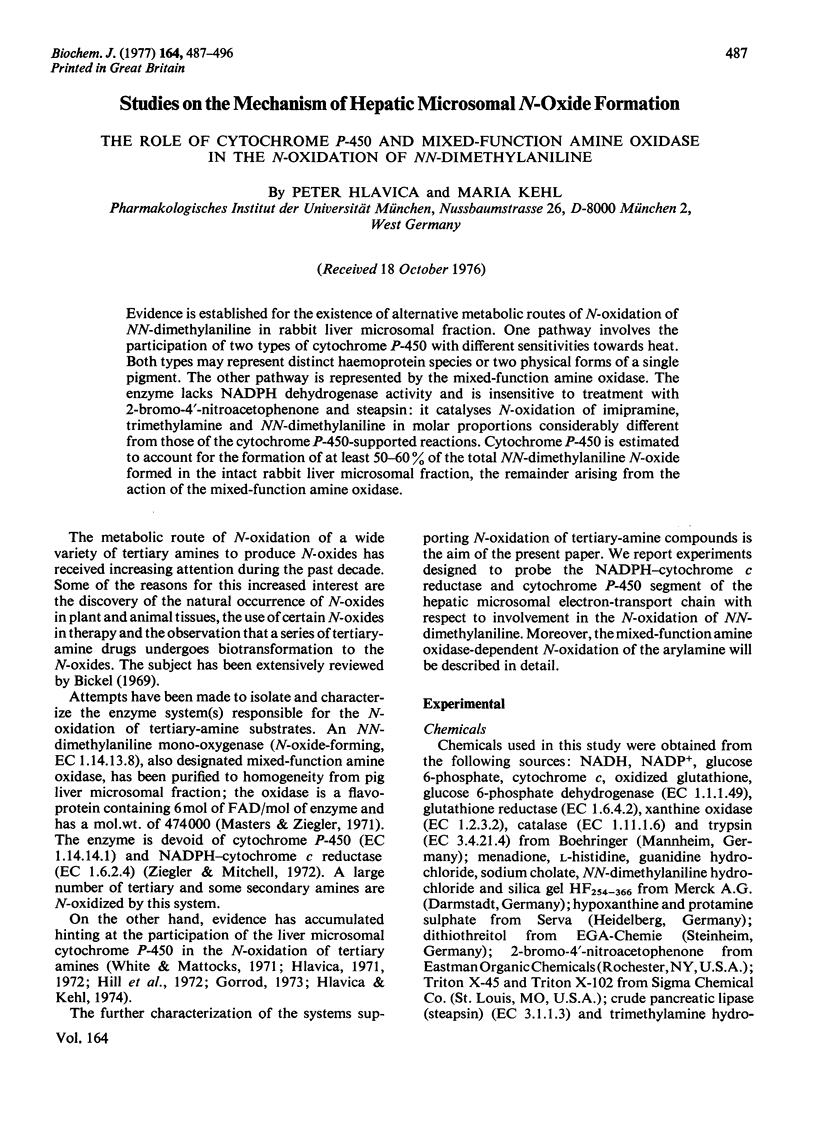

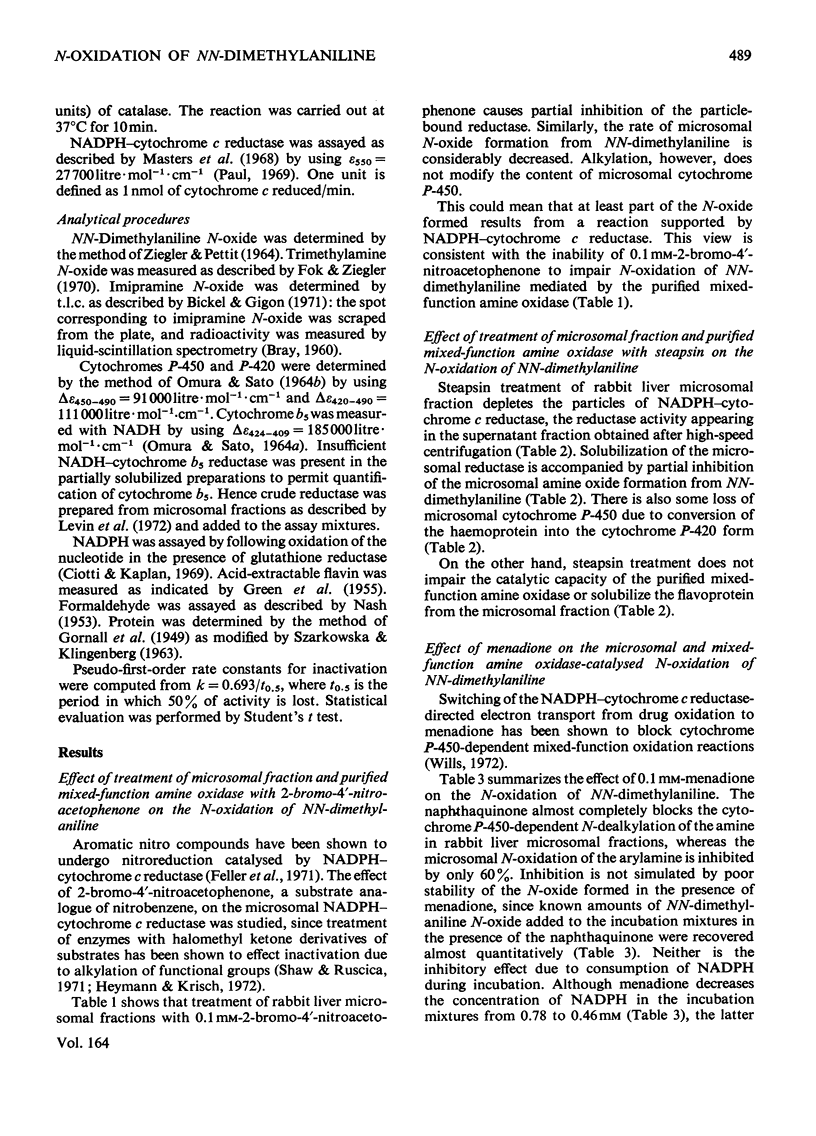
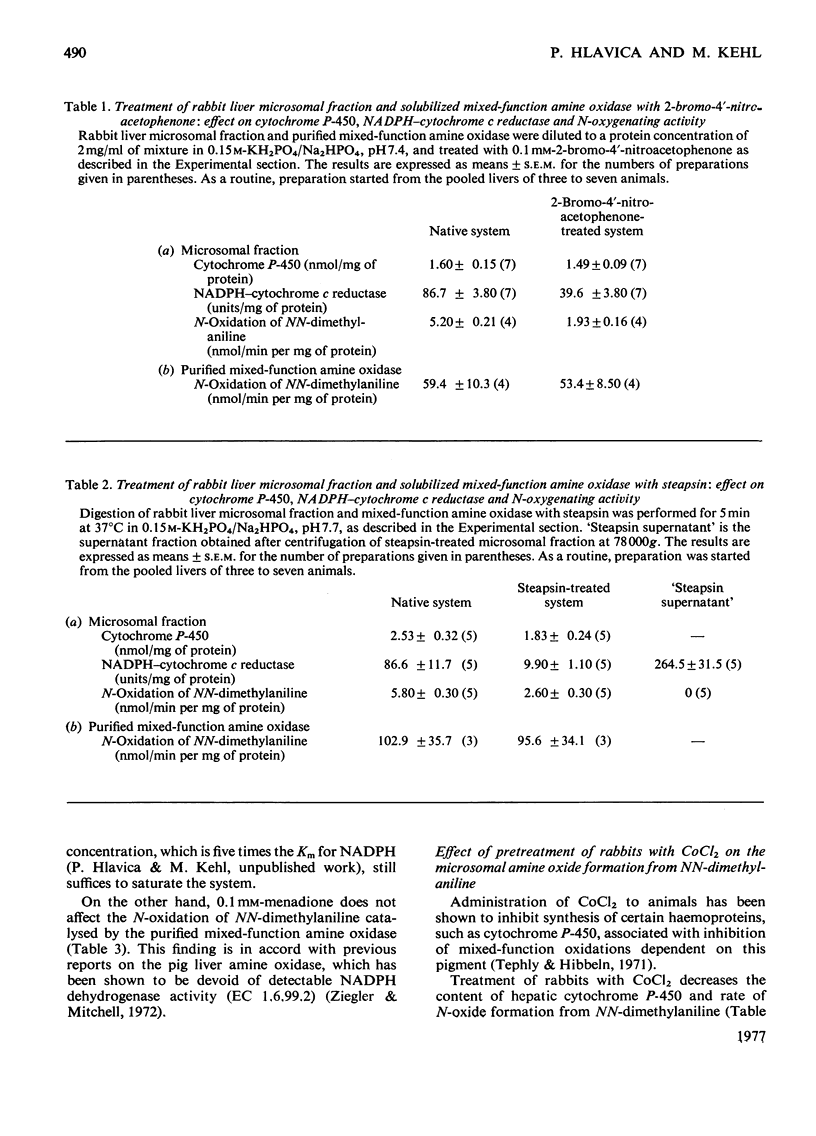


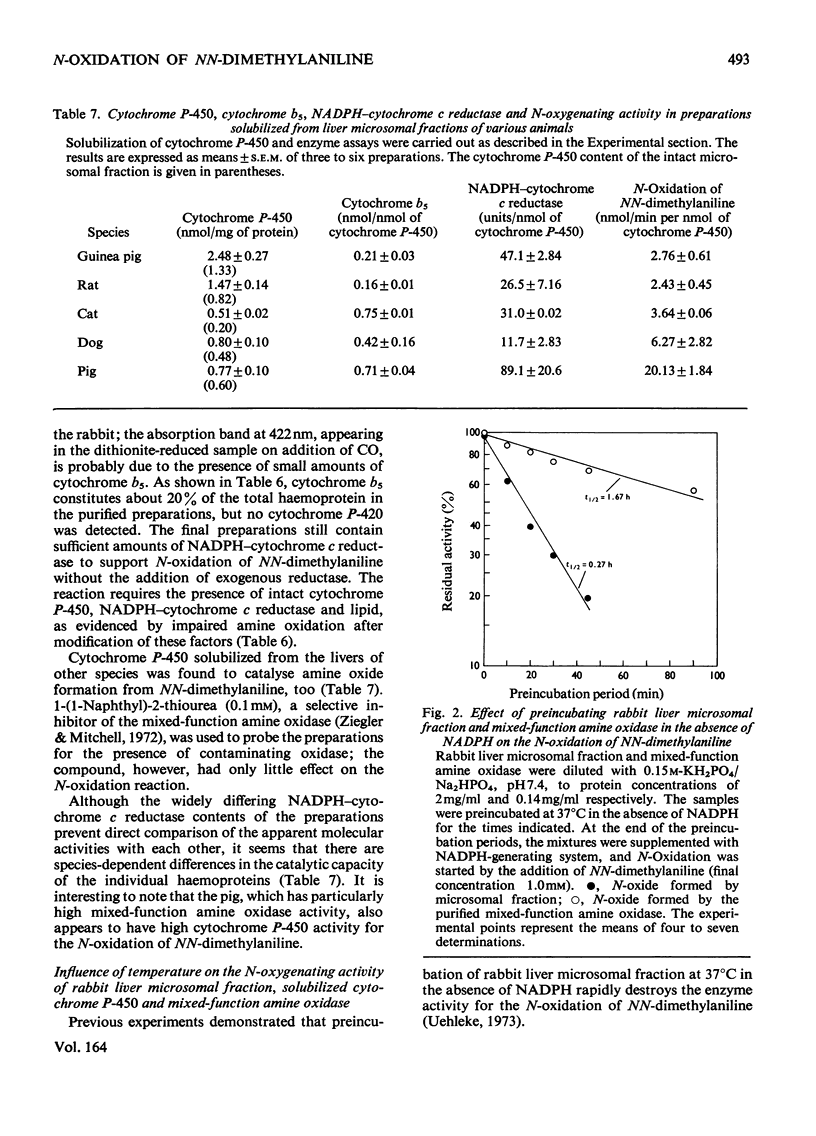
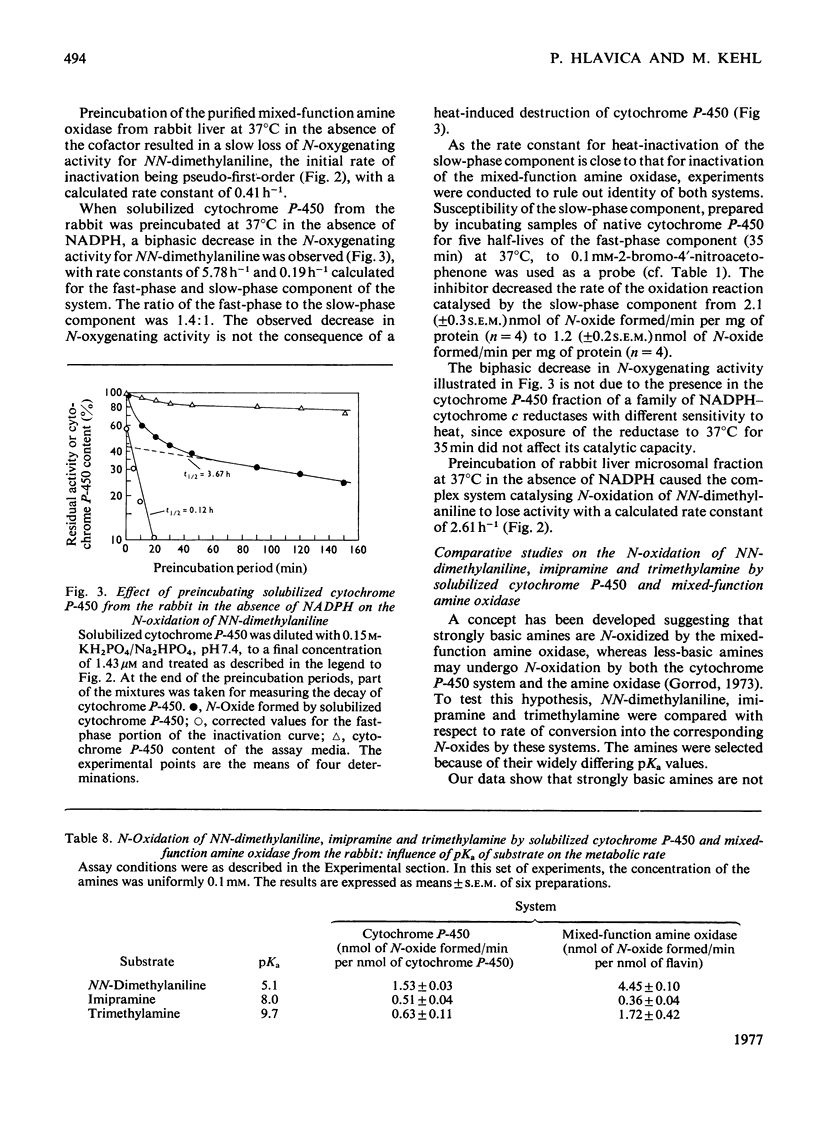
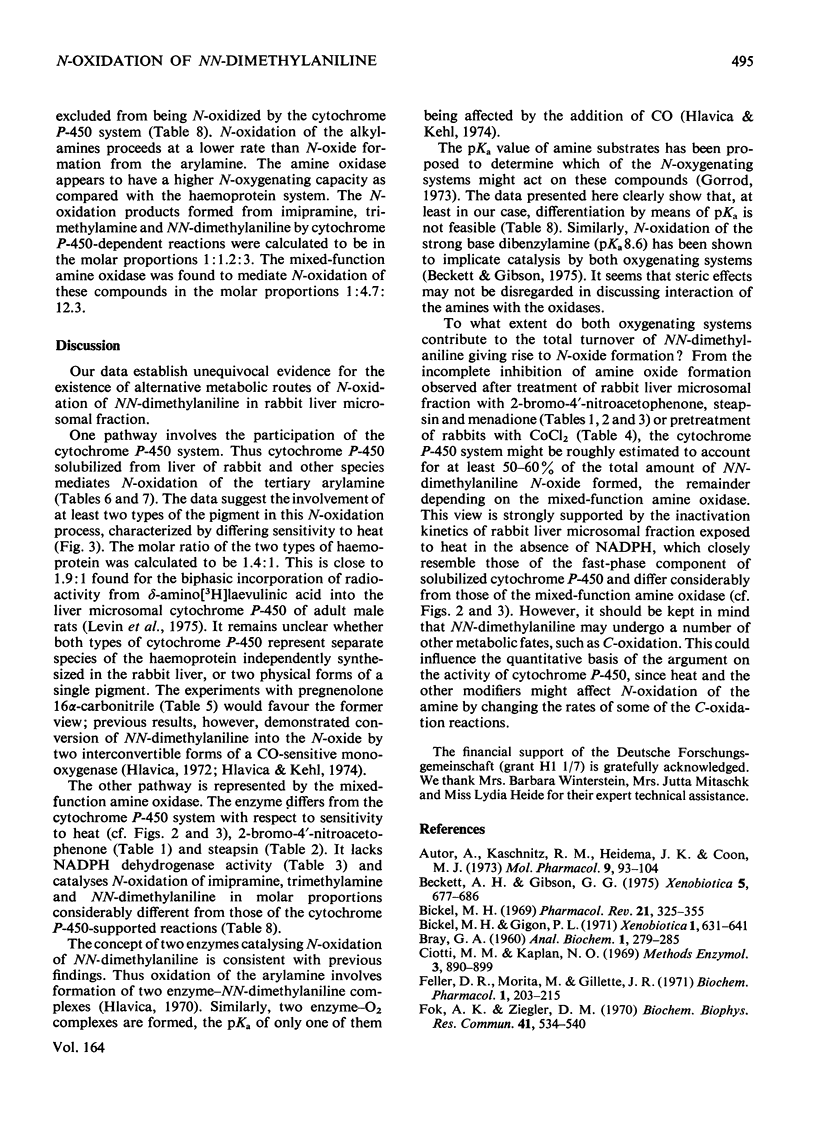
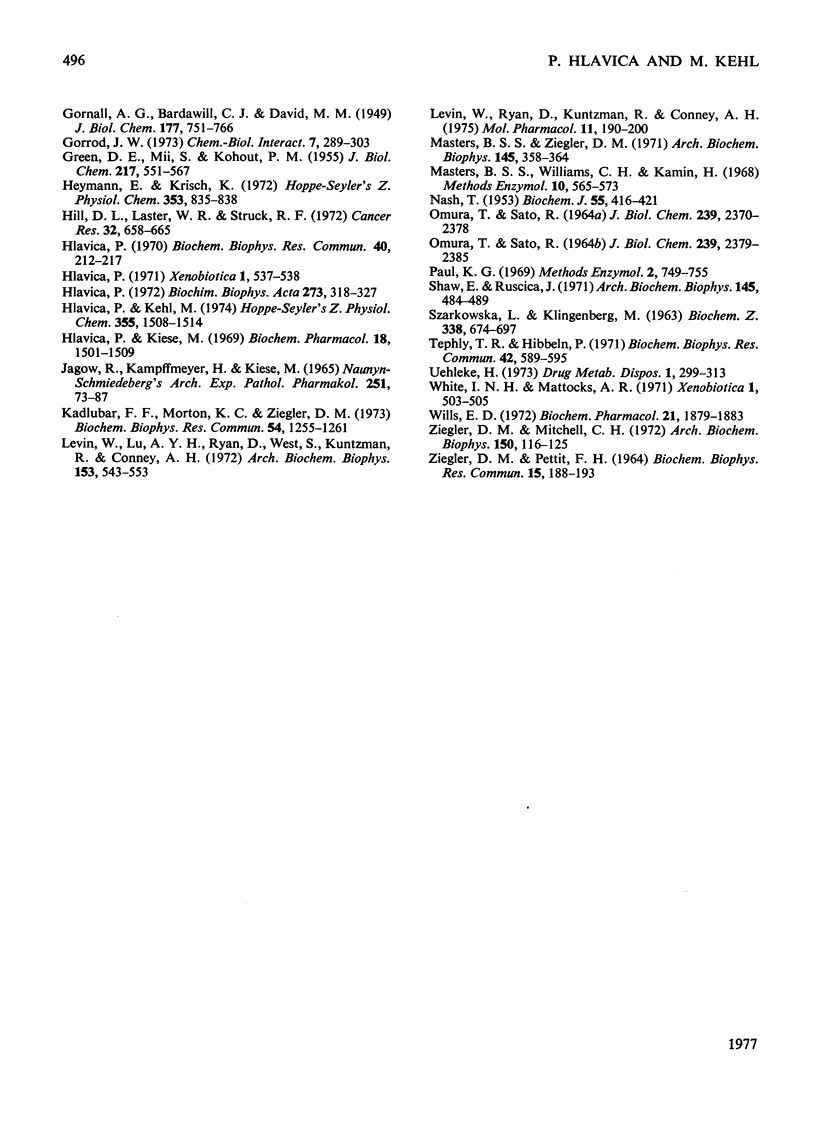
Selected References
These references are in PubMed. This may not be the complete list of references from this article.
- Autor A. P., Kaschnitz R. M., Heidema J. K., Coon M. J. Sedimentation and other properties of the reconstituted liver microsomal mixed-function oxidase system containing cytochrome P-450, reduced triphosphopyridine nucleotide-cytochrome P-450 reductase, and phosphatidylcholine. Mol Pharmacol. 1973 Jan;9(1):93–104. [PubMed] [Google Scholar]
- Beckett A. H., Gibson G. G. Microsomal N-hydroxylation of dibenzylamine. Xenobiotica. 1975 Nov;5(11):677–686. doi: 10.3109/00498257509056137. [DOI] [PubMed] [Google Scholar]
- Bickel M. H., Gigon P. L. Metabolic interconversions and binding of imipramine, imipramine-N-oxide, and desmethylimipramine in rat liver slices. Xenobiotica. 1971 Nov;1(6):631–641. doi: 10.3109/00498257109112273. [DOI] [PubMed] [Google Scholar]
- Bickel M. H. The pharmacology and biochemistry of N-oxides. Pharmacol Rev. 1969 Dec;21(4):325–355. [PubMed] [Google Scholar]
- Feller D. R., Morita M., Gillette J. R. Enzymatic reduction of niridazole by rat liver microsomes. Biochem Pharmacol. 1971 Jan;20(1):203–215. doi: 10.1016/0006-2952(71)90486-2. [DOI] [PubMed] [Google Scholar]
- Fok A. K., Ziegler D. M. Estimation of amine oxides in the presence of hepatic microsomes. Biochem Biophys Res Commun. 1970 Nov 9;41(3):534–540. doi: 10.1016/0006-291x(70)90045-8. [DOI] [PubMed] [Google Scholar]
- GREEN D. E., MII S., KOHOUT P. M. Studies on the terminal electron transport system. I. Succinic dehydrogenase. J Biol Chem. 1955 Dec;217(2):551–567. [PubMed] [Google Scholar]
- Gorrod J. W. Differentiation of various types of biological oxidation of nitrogen in organic compounds. Chem Biol Interact. 1973 Nov;289(303):289–303. doi: 10.1016/0009-2797(73)90004-5. [DOI] [PubMed] [Google Scholar]
- Heymann E., Krisch K. Hemmung von Schweineleber-Carboxylesterase durch Substart-analoge Alkylierungsmittel und Aminogruppen-spezifische Reagentien. Hoppe Seylers Z Physiol Chem. 1972 May;353(5):835–838. [PubMed] [Google Scholar]
- Hill D. L., Laster W. R., Jr, Struck R. F. Enzymatic metabolism of cyclophosphamide and nicotine and production of a toxic cyclophosphamide metabolite. Cancer Res. 1972 Apr;32(4):658–665. [PubMed] [Google Scholar]
- Hlavica P. Hepatic mixed function amine oxidase. An allosteric system. Xenobiotica. 1971 Jul-Oct;1(4):537–538. doi: 10.3109/00498257109041524. [DOI] [PubMed] [Google Scholar]
- Hlavica P. Interaction of oxygen and aromatic amines with hepatic microsomal mixed-function oxidase. Biochim Biophys Acta. 1972 Jul 19;273(2):318–327. doi: 10.1016/0304-4165(72)90223-1. [DOI] [PubMed] [Google Scholar]
- Hlavica P., Kehl M. Studies on the mechanism of hepatic microsomal N-oxide formation. I. Effect of carbon monoxide on the N-oxidation of N,N-dimethylaniline. Hoppe Seylers Z Physiol Chem. 1974 Dec;355(12):1508–1514. doi: 10.1515/bchm2.1974.355.2.1508. [DOI] [PubMed] [Google Scholar]
- Hlavica P., Kiese M. N-oxygenation of N-alkyl- and N,N-dialkylanilines by rabbit liver microsomes. Biochem Pharmacol. 1969 Jun;18(6):1501–1509. doi: 10.1016/0006-2952(69)90265-2. [DOI] [PubMed] [Google Scholar]
- Hlavica P. Studies on the active site of mixed function oxidases in rabbit liver microsomes. Biochem Biophys Res Commun. 1970 Jul 13;40(1):212–217. doi: 10.1016/0006-291x(70)91068-5. [DOI] [PubMed] [Google Scholar]
- Kadlubar F. F., Morton K. C., Ziegler D. M. Microsomal-catalyzed hydroperoxide-dependent C-oxidation of amines. Biochem Biophys Res Commun. 1973 Oct 15;54(4):1255–1261. doi: 10.1016/0006-291x(73)91122-4. [DOI] [PubMed] [Google Scholar]
- Levin W., Lu A. Y., Ryan D., West S., Kuntzman R., Conney A. H. Partial purification and properties of cytochromes P-450 and P-448 from rat liver microsomes. Arch Biochem Biophys. 1972 Dec;153(2):543–553. doi: 10.1016/0003-9861(72)90373-6. [DOI] [PubMed] [Google Scholar]
- Levin W., Ryan D., Kuntzman R., Conney A. H. Neonatal imprinting and the turnover of microsomal cytochrome P-450 in rat liver. Mol Pharmacol. 1975 Mar;11(2):190–200. [PubMed] [Google Scholar]
- Masters B. S., Ziegler D. M. The distinct nature and function of NADPH-cytochrome c reductase and the NADPH-dependent mixed-function amine oxidase of porcine liver microsomes. Arch Biochem Biophys. 1971 Jul;145(1):358–364. doi: 10.1016/0003-9861(71)90048-8. [DOI] [PubMed] [Google Scholar]
- NASH T. The colorimetric estimation of formaldehyde by means of the Hantzsch reaction. Biochem J. 1953 Oct;55(3):416–421. doi: 10.1042/bj0550416. [DOI] [PMC free article] [PubMed] [Google Scholar]
- OMURA T., SATO R. THE CARBON MONOXIDE-BINDING PIGMENT OF LIVER MICROSOMES. I. EVIDENCE FOR ITS HEMOPROTEIN NATURE. J Biol Chem. 1964 Jul;239:2370–2378. [PubMed] [Google Scholar]
- OMURA T., SATO R. THE CARBON MONOXIDE-BINDING PIGMENT OF LIVER MICROSOMES. II. SOLUBILIZATION, PURIFICATION, AND PROPERTIES. J Biol Chem. 1964 Jul;239:2379–2385. [PubMed] [Google Scholar]
- SZARKOWSKA L., KLINGENBERG M. ON THE ROLE OF UBIQUINONE IN MITOCHONDRIA. SPECTROPHOTOMETRIC AND CHEMICAL MEASUREMENTS OF ITS REDOX REACTIONS. Biochem Z. 1963;338:674–697. [PubMed] [Google Scholar]
- Shaw E., Ruscica J. The reactivity of His-57 in chymotrypsin to alkylation. Arch Biochem Biophys. 1971 Aug;145(2):484–489. doi: 10.1016/s0003-9861(71)80008-5. [DOI] [PubMed] [Google Scholar]
- Tephly T. R., Hibbeln P. The effect of cobalt chloride administration on the synthesis of hepatic microsomal cytochrome P-450. Biochem Biophys Res Commun. 1971 Feb 19;42(4):589–595. doi: 10.1016/0006-291x(71)90528-6. [DOI] [PubMed] [Google Scholar]
- Uehleke H. The role of cytochrome P-450 in the N-oxidation of individual amines. Drug Metab Dispos. 1973 Jan-Feb;1(1):299–313. [PubMed] [Google Scholar]
- White I. N., Mattocks A. R. Some factors affecting the conversion of pyrrolizidine alkaloids to N-oxides and to pyrrolic derivatives in vitro. Xenobiotica. 1971 Jul-Oct;1(4):503–505. doi: 10.3109/00498257109041518. [DOI] [PubMed] [Google Scholar]
- Wills E. D. Effects of vitamin K and naphthoquinones on lipid peroxide formation and oxidative demethylation by liver microsomes. Biochem Pharmacol. 1972 Jul 1;21(13):1879–1883. doi: 10.1016/0006-2952(72)90184-0. [DOI] [PubMed] [Google Scholar]
- Ziegler D. M., Mitchell C. H. Microsomal oxidase. IV. Properties of a mixed-function amine oxidase isolated from pig liver microsomes. Arch Biochem Biophys. 1972 May;150(1):116–125. doi: 10.1016/0003-9861(72)90017-3. [DOI] [PubMed] [Google Scholar]
- von Jagow R., Kampffmeyer H., Kiese M. The preparation of microsomes. Naunyn Schmiedebergs Arch Exp Pathol Pharmakol. 1965 Jun 1;251(1):73–87. doi: 10.1007/BF00245731. [DOI] [PubMed] [Google Scholar]


